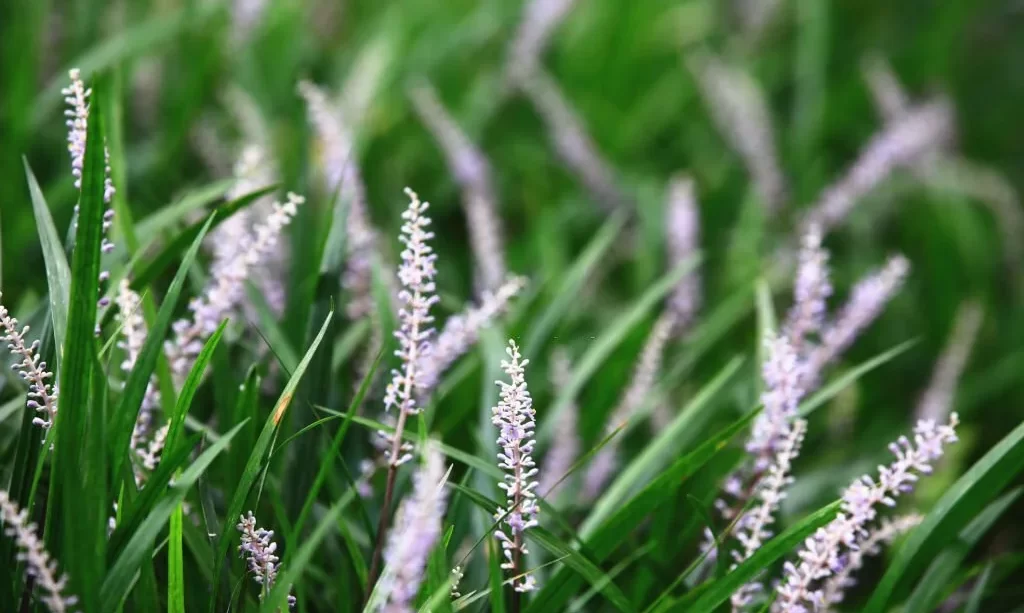Liriope, often referred to as “monkey grass” or “lilyturf”, is a beloved ornamental grass known for its resilience and year-round greenery. While liriope adds beauty and structure to gardens and landscapes, it requires occasional care to maintain its vitality and appearance. Timing is crucial when it comes to cutting back liriope. In this article, we will explore the ideal seasons and techniques for cutting back liriope to ensure a thriving and attractive garden.
Liriope Growth
Before delving into the when and how of cutting back liriope, it’s essential to grasp the growth patterns and characteristics of this versatile ornamental grass. Liriope boasts evergreen foliage, composed of arching leaves that form dense clumps. Additionally, it produces tall flower spikes adorned with delicate, violet-blue or white blooms, followed by small, berry-like fruits. Liriope’s unique combination of form and function makes it a popular choice in gardens.
Spring: The Optimal Time for Cutting Back
Early spring is the optimal time to cut back liriope for several compelling reasons. As the last vestiges of winter yield to the warmth of the approaching spring, liriope begins to exhibit new growth. This new growth signifies the perfect window for rejuvenating your liriope plants.
During this time, liriope clumps may display signs of wear, with older leaves turning brown and becoming brittle. Cutting back in early spring enables you to remove this aged and tattered foliage, making way for fresh, vibrant growth.
To properly cut back liriope in spring, follow these steps:
- Use sharp garden shears or pruners.
- Trim the foliage close to the ground, removing all the dead or brown leaves.
- Be mindful not to cut into the green, healthy growth emerging from the base.
Spring pruning of liriope allows it to flourish with renewed vigor and rejuvenated appearance throughout the growing season. The removal of the old foliage not only enhances the aesthetics of your garden but also promotes the health and vitality of this beloved ornamental grass.
Late Winter: An Alternative Timing Option
While early spring is the recommended time for cutting back liriope, late winter, just before the arrival of spring, presents an alternative timing option. Late winter pruning can be an appealing choice for gardeners who want to get a head start on their spring garden tasks.
In late winter, liriope plants may still exhibit some of their older, weathered foliage from the previous growing season. Cutting back during this period allows you to address this issue before the new spring growth emerges.
To cut back liriope in late winter, follow similar steps to those in early spring:
- Employ sharp garden shears or pruners.
- Trim the foliage close to the ground, removing any dead or discolored leaves.
- Be cautious not to interfere with the emerging green growth.
Late winter pruning provides the advantage of tidying up your garden early, ensuring a clean and fresh appearance as spring approaches. Keep in mind that the key is to perform this task just before the plants enter their active growth phase, allowing the new shoots to emerge unencumbered.
Fall: Avoiding the Common Mistake
It’s crucial to avoid one common mistake in liriope care, which is cutting back in the fall. Fall pruning can have detrimental effects on your liriope plants, potentially hindering their resilience during the winter and impacting the lush growth of the following spring.
During the fall, liriope is preparing for the colder months. The foliage you see, although somewhat weathered, is essential for the plant’s ability to withstand winter conditions. The leaves provide protection to the crown of the plant, which can be sensitive to freezing temperatures.
Pruning liriope in the fall, particularly removing all the foliage, leaves the plant vulnerable to winter stresses. It can result in weaker spring growth and less lush clumps in the following year.
Instead of cutting back liriope in the fall, consider leaving the plant untouched during this season. The foliage, though it may appear somewhat aged, plays a vital role in ensuring the plant’s ability to withstand the challenges of winter. If necessary, you can address the older growth in late winter or early spring when the plant is poised for rejuvenation.
By avoiding the common mistake of fall pruning, you allow your liriope to thrive and preserve its health, leading to a more vibrant and resilient garden in the long run.
Addressing Overgrown Liriope
Over time, liriope clumps can become overgrown, necessitating some extra care. If you find that your liriope has grown too large or unruly, it’s possible to address the issue without compromising the plant’s health. One effective method is dividing and replanting.
Dividing liriope involves separating the clump into smaller sections and replanting them. This not only controls the size of the plant but also promotes healthier growth. Here’s how to address overgrown liriope:
- Dig up the entire clump, being careful not to damage the roots.
- Using a sharp garden spade or knife, divide the clump into smaller sections. Each section should have both roots and foliage.
- Replant the divided sections at the desired spacing in your garden, ensuring they have sufficient room to grow.
- Water the newly transplanted sections thoroughly to help them establish themselves.
Dividing liriope should be done during the early spring, coinciding with the recommended time for pruning. This ensures that the divided sections have ample time to establish and thrive during the growing season.
Special Considerations for Variegated Liriope
If you have variegated liriope in your garden, it’s essential to consider its unique characteristics when cutting back. Variegated liriope features striking variegation on its leaves, typically a combination of green and cream or white stripes. To maintain the distinctive appearance of variegated liriope while ensuring its overall well-being, follow these considerations:
- When cutting back variegated liriope, avoid removing excessive amounts of healthy foliage. The variegation is not only aesthetically pleasing but also plays a role in photosynthesis, so ensure that each division or cut piece retains a portion of the variegated leaves.
- Variegated liriope may be slightly more sensitive to temperature fluctuations. Keep in mind that it might benefit from an extra layer of mulch during the winter months to protect the roots from extreme cold.
- Regularly monitor variegated liriope for signs of pests or diseases, as it can be more susceptible to certain issues. Promptly address any problems to maintain the plant’s health and appearance.
Conclusion
In conclusion, understanding when and how to cut back liriope is fundamental to keeping this ornamental grass healthy and vibrant. Whether you choose early spring or late winter for your pruning, your liriope will reward you with lush, rejuvenated growth throughout the growing season. Remember to avoid the common mistake of cutting back in the fall, as this can have adverse effects on the plant’s winter hardiness and spring performance.
Addressing overgrown liriope through division and replanting is a solution for maintaining its size and appearance while promoting healthy growth. Additionally, for variegated liriope, special care considerations ensure that its unique characteristics are preserved.
By following the right timing and techniques for cutting back liriope, you can enjoy a thriving and attractive garden with this versatile ornamental grass as a prominent feature.




